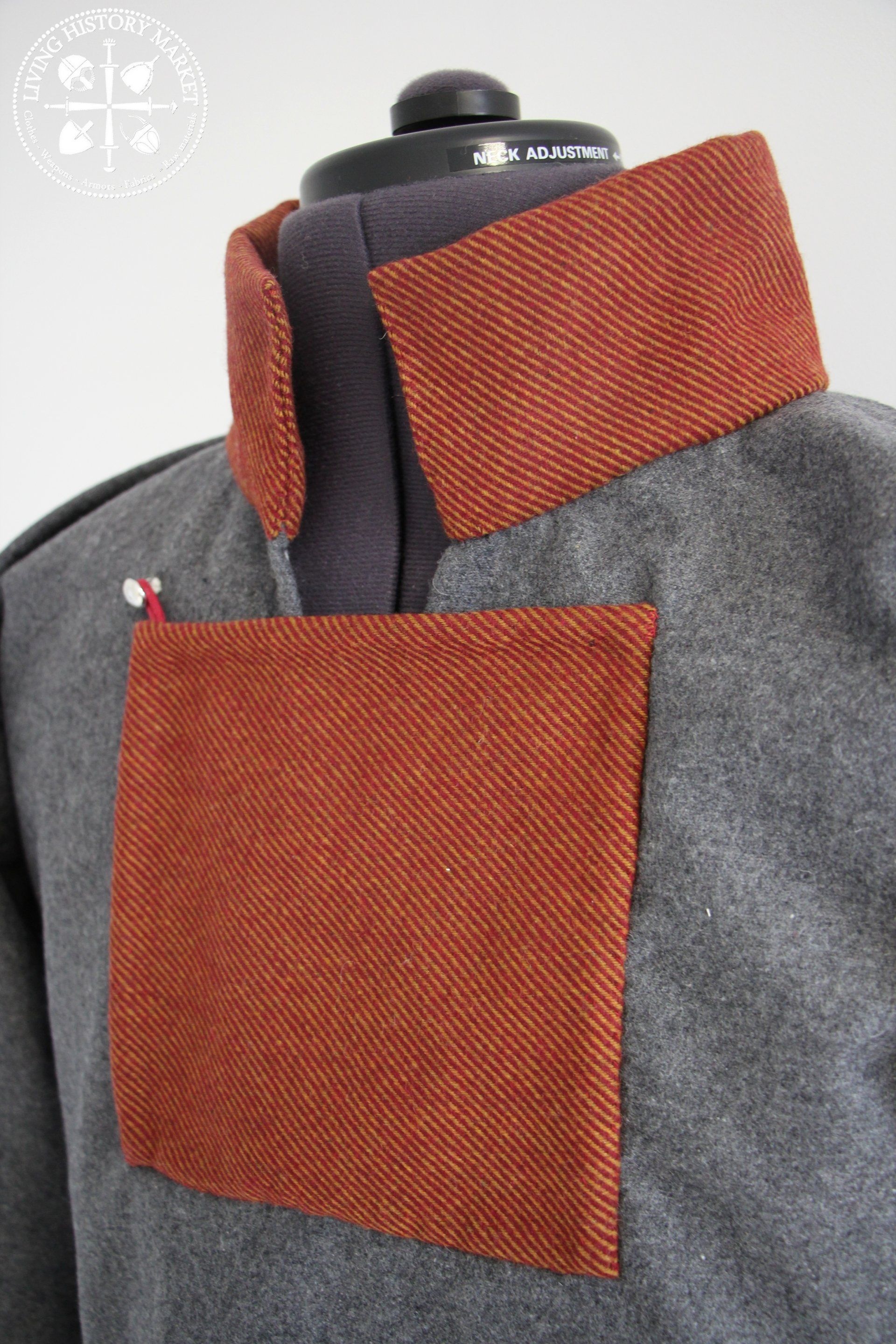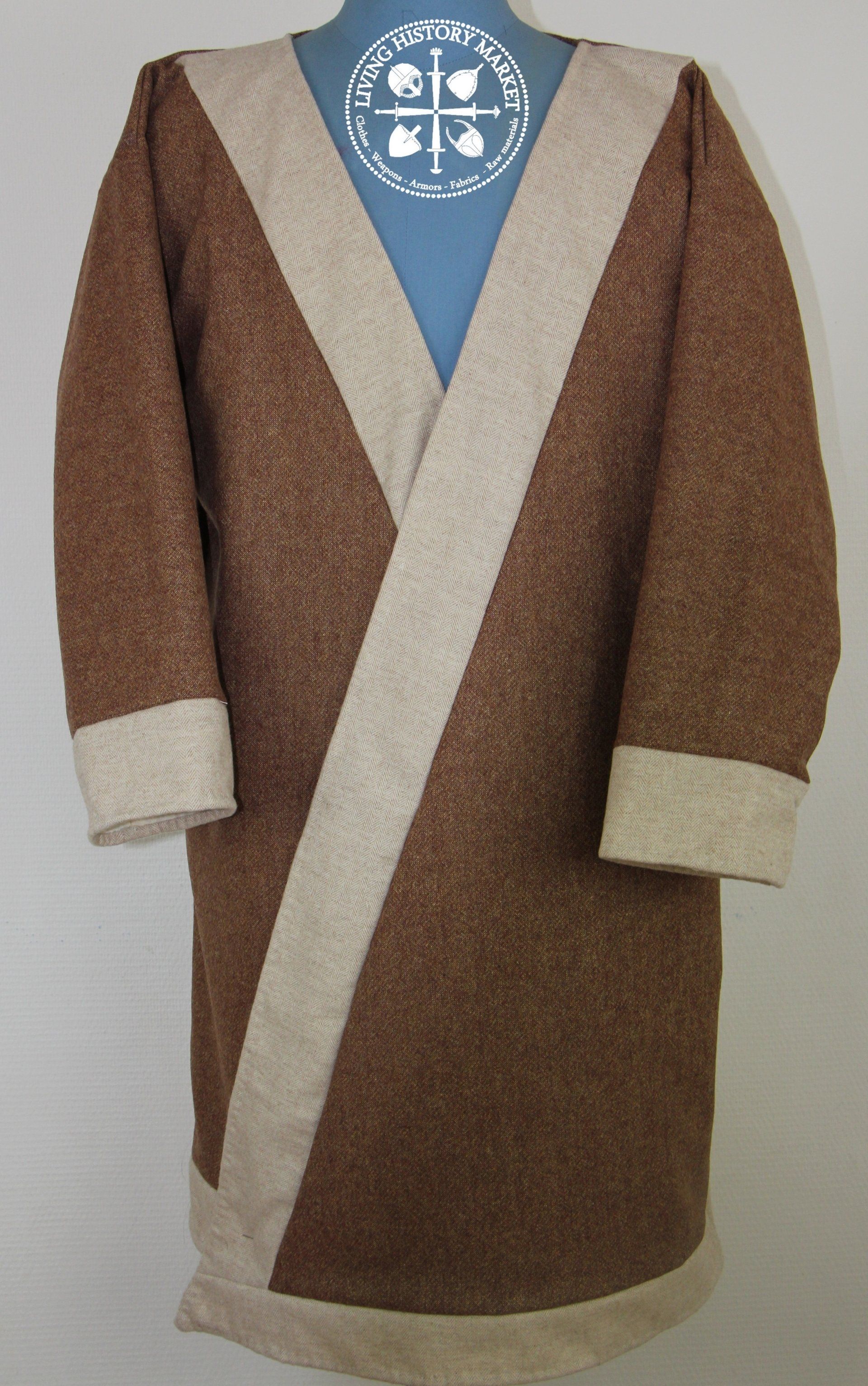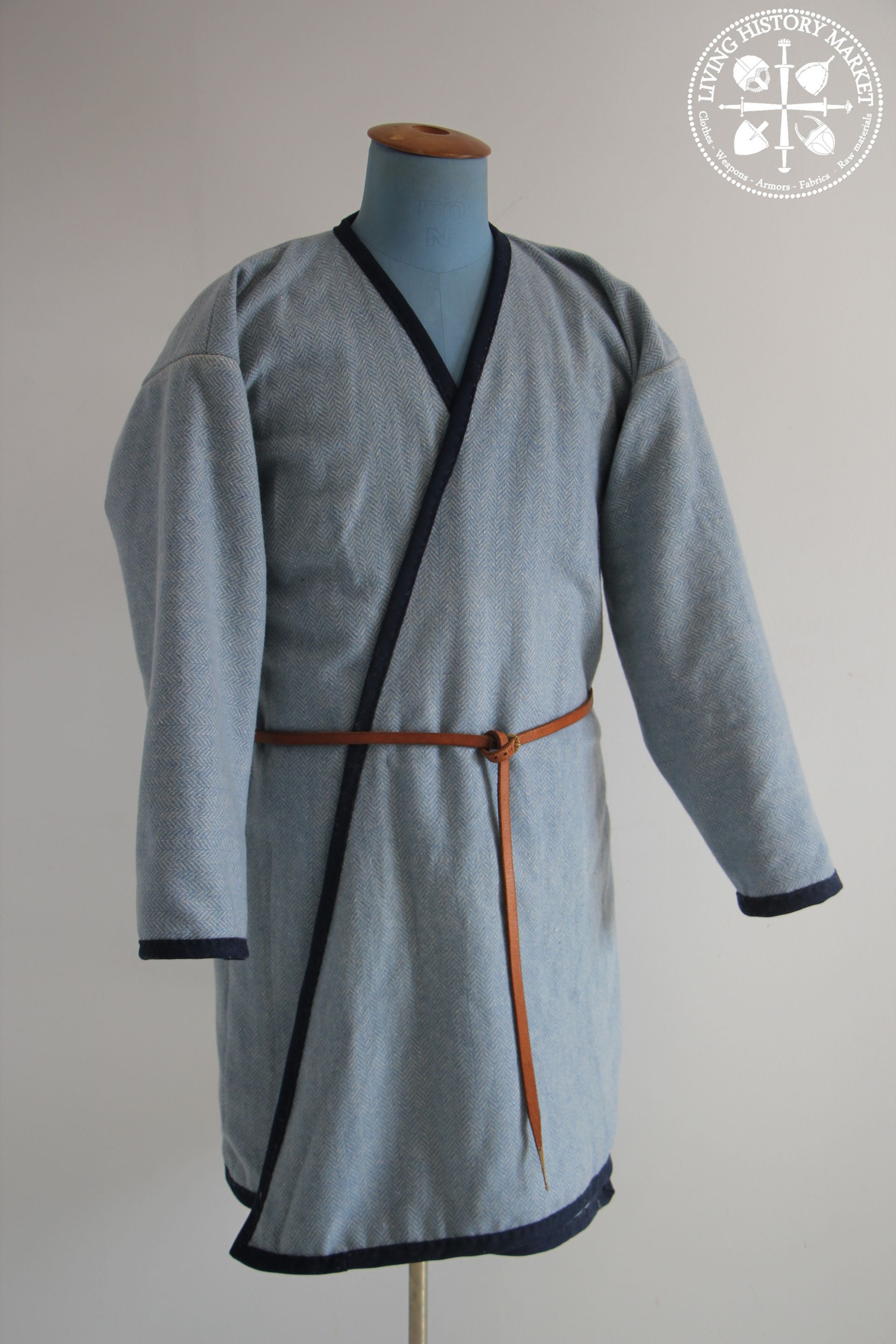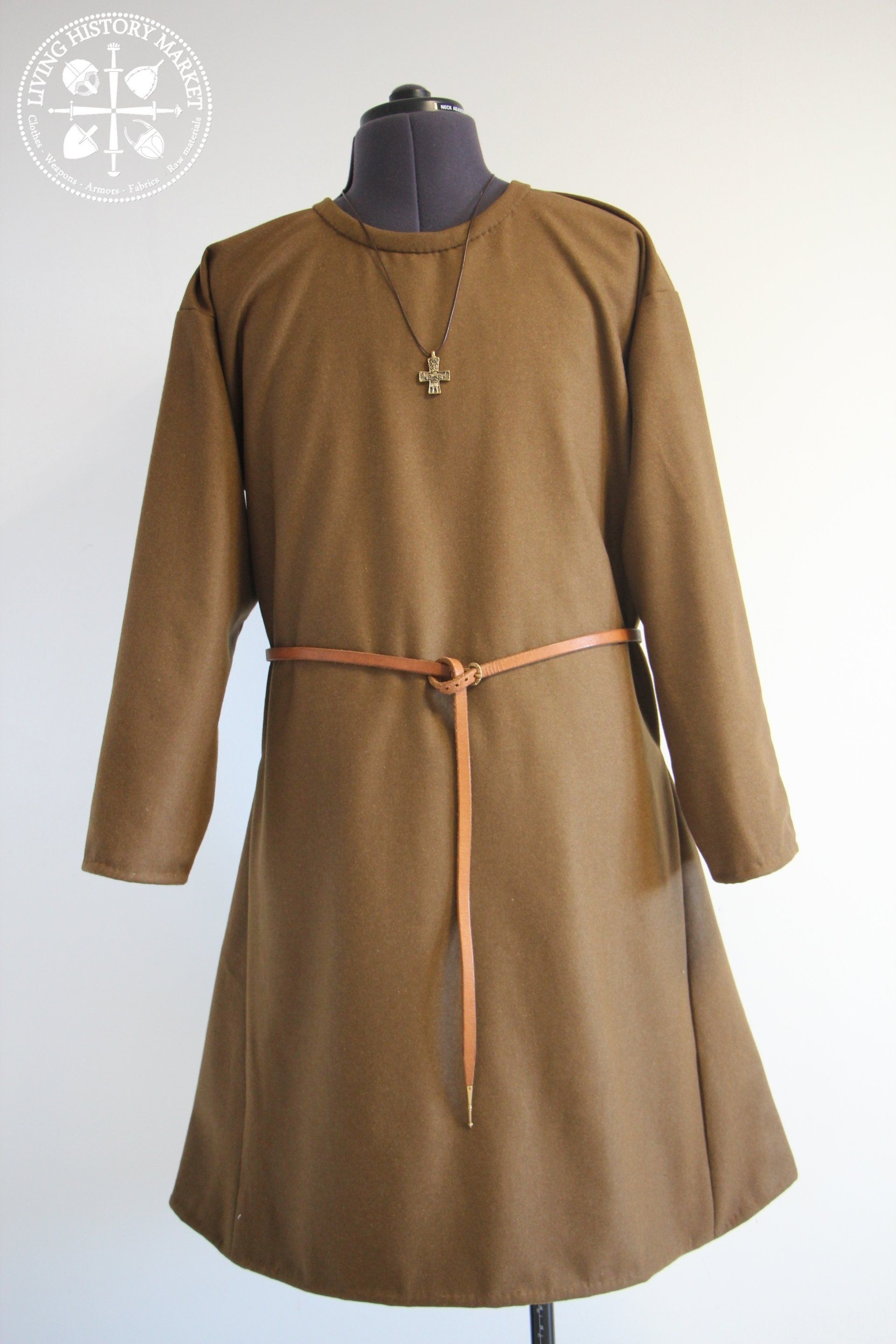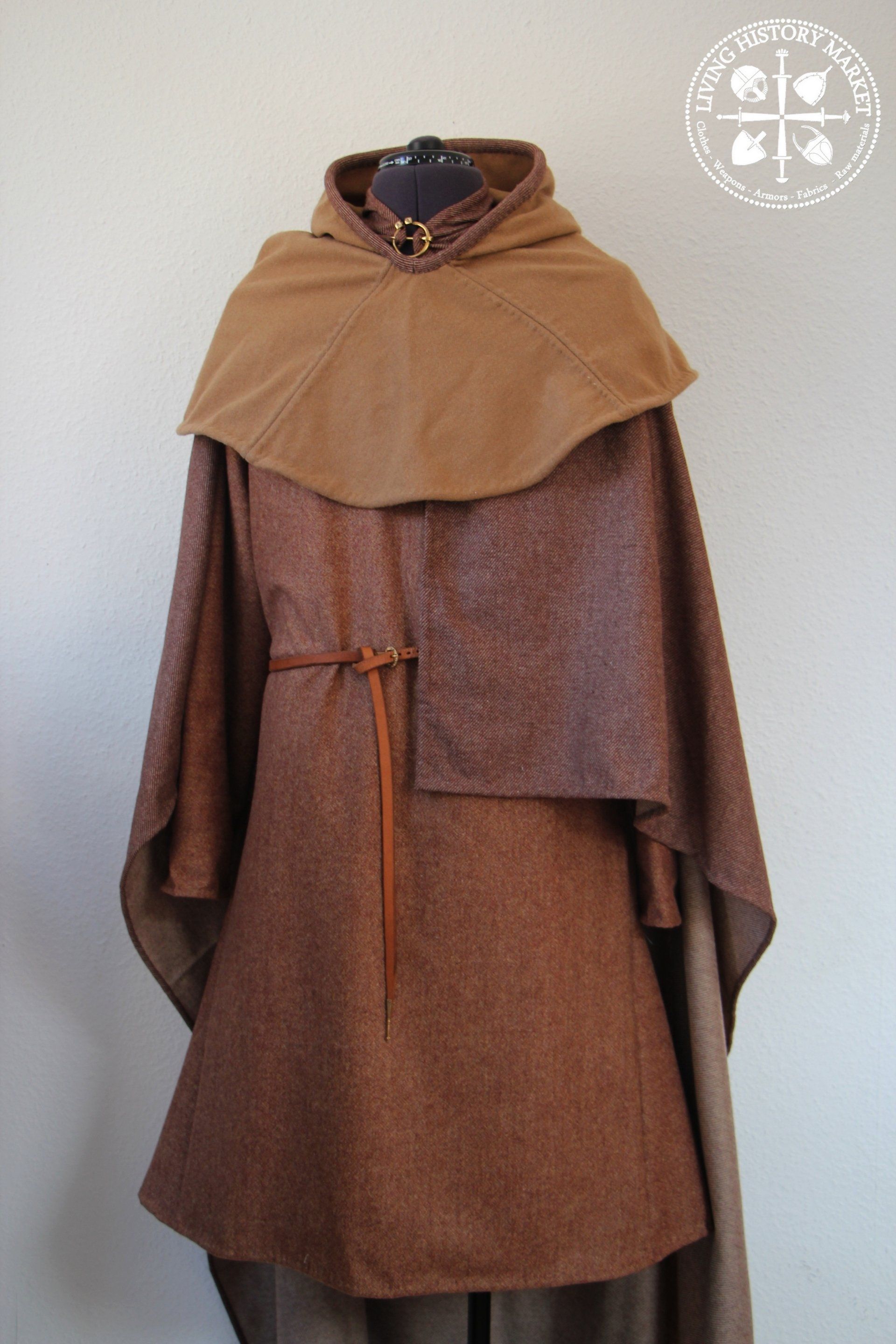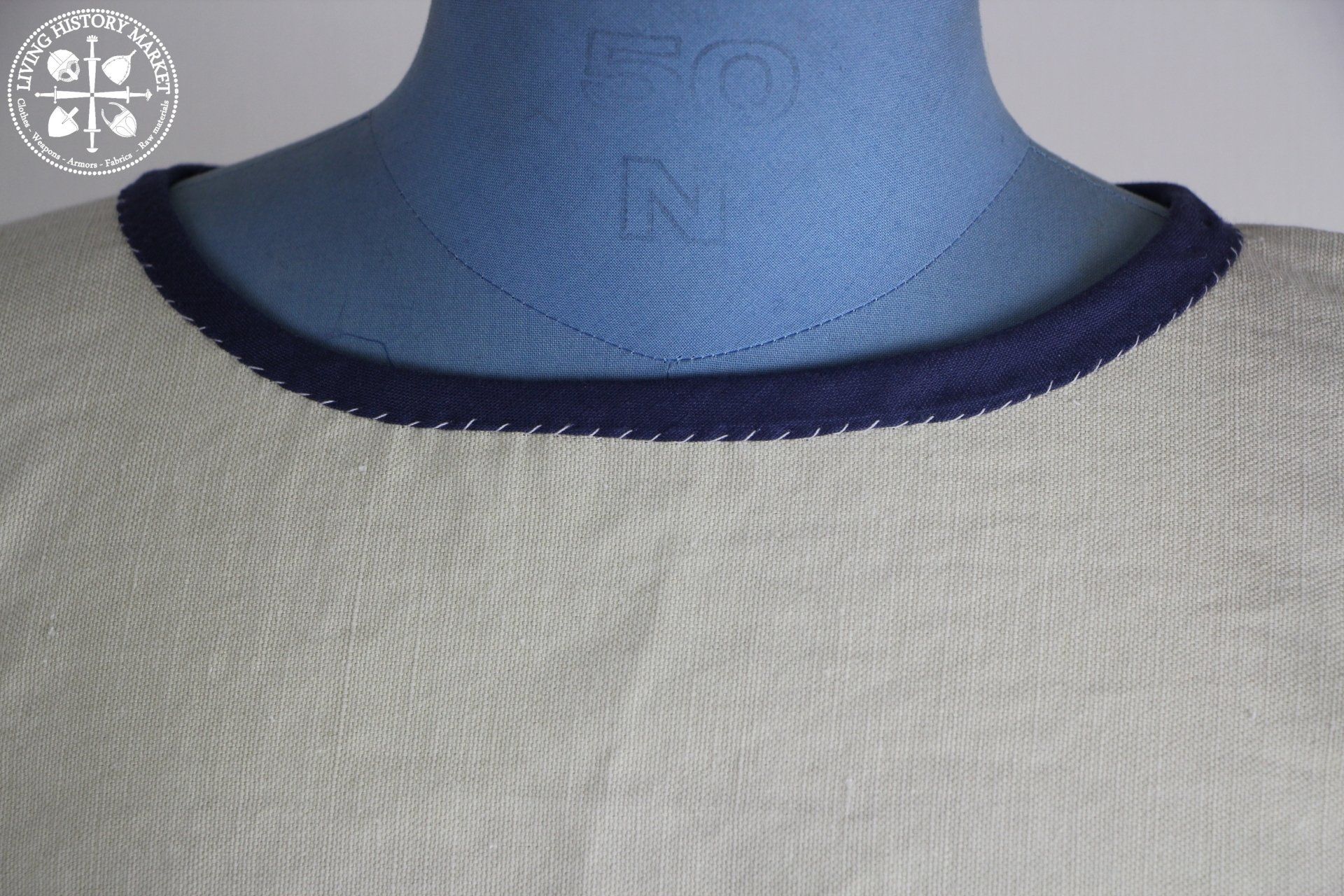The Skjoldehamn tunics are a part of a bogfind, from Northern Norway. It is kept in Tromsö museum. It has been dated to the late Middle Ages, no earlier than the mid-15th Century, because one 'shirt' that was found with it has a standing collar; a fashion that becomes common on the continent only towards the end of the 14th Century. However, a C14-dating of the fabric shows that it was made much earlier, around 1000 A.D.

Viking (Haithabu / Hedeby) caftan "Klappenrock"
This garment with an asymmetrical flap has long attracted the curiosity of researchers. The textile remains found at Hedeby and dated around the year 900-1000 are similar to the Vendel, or Anglo-Saxon caftans that we know thanks to the rich decoration of the helmets of Sutton Hoo, Vendel, etc. This garment would thus have passed through the ages, with ultimately quite a few modifications.
We make a lot of these caftans, most of them available in a "padded" version for the practice of Viking sports combat. However, from time to time we make such caftans for "civilian" use.

Anglo-Saxon / Norman tunics (from the Bayeux "Tapestry")
Anglo-Saxon / Norman fashion tunics, after the Bayeux tapestry, a masterpiece of 11th century embroidery, and unparalleled witness to the fashion of the time of William the Conqueror and the last Viking raids. These tunics have a «key-hole » collar, and oftenly slits on the bottom, front and back, increasing comfort, and ease horse-riding.

Classical tunics
Generic tunics, according to the many illuminations available, and the archaeological remains known to date. These very simple tunics are suitable for the poorest, or simply for daily use.









